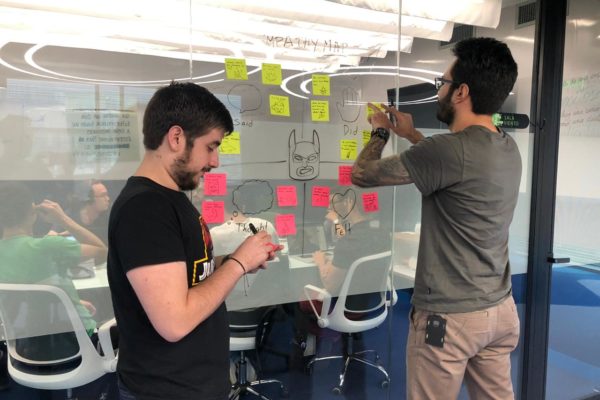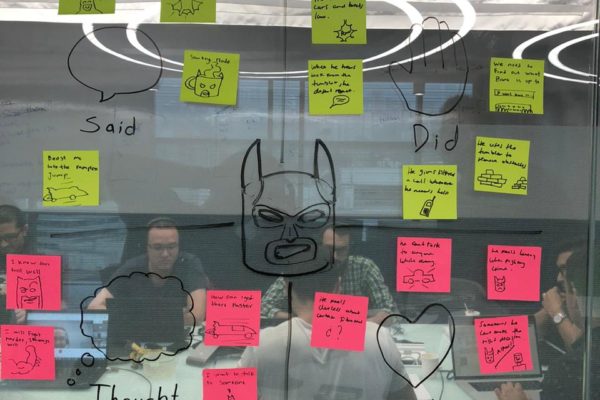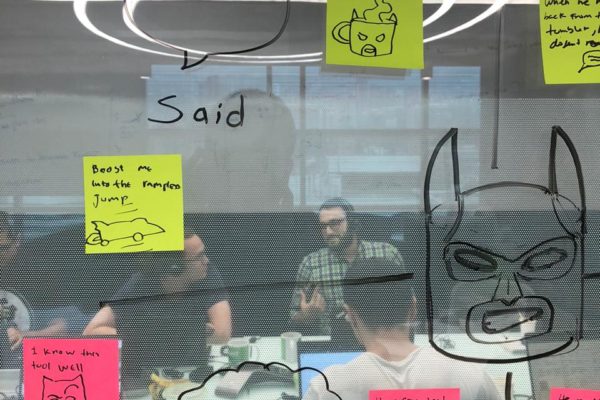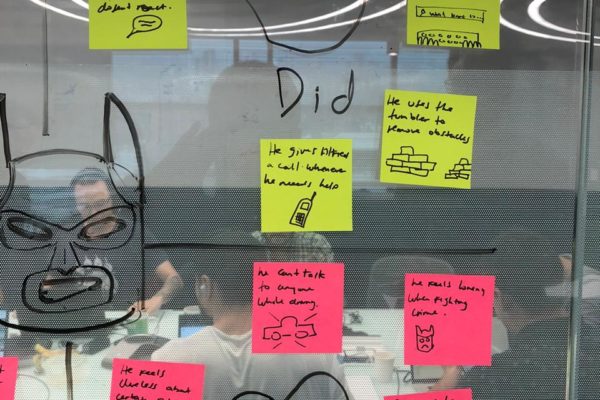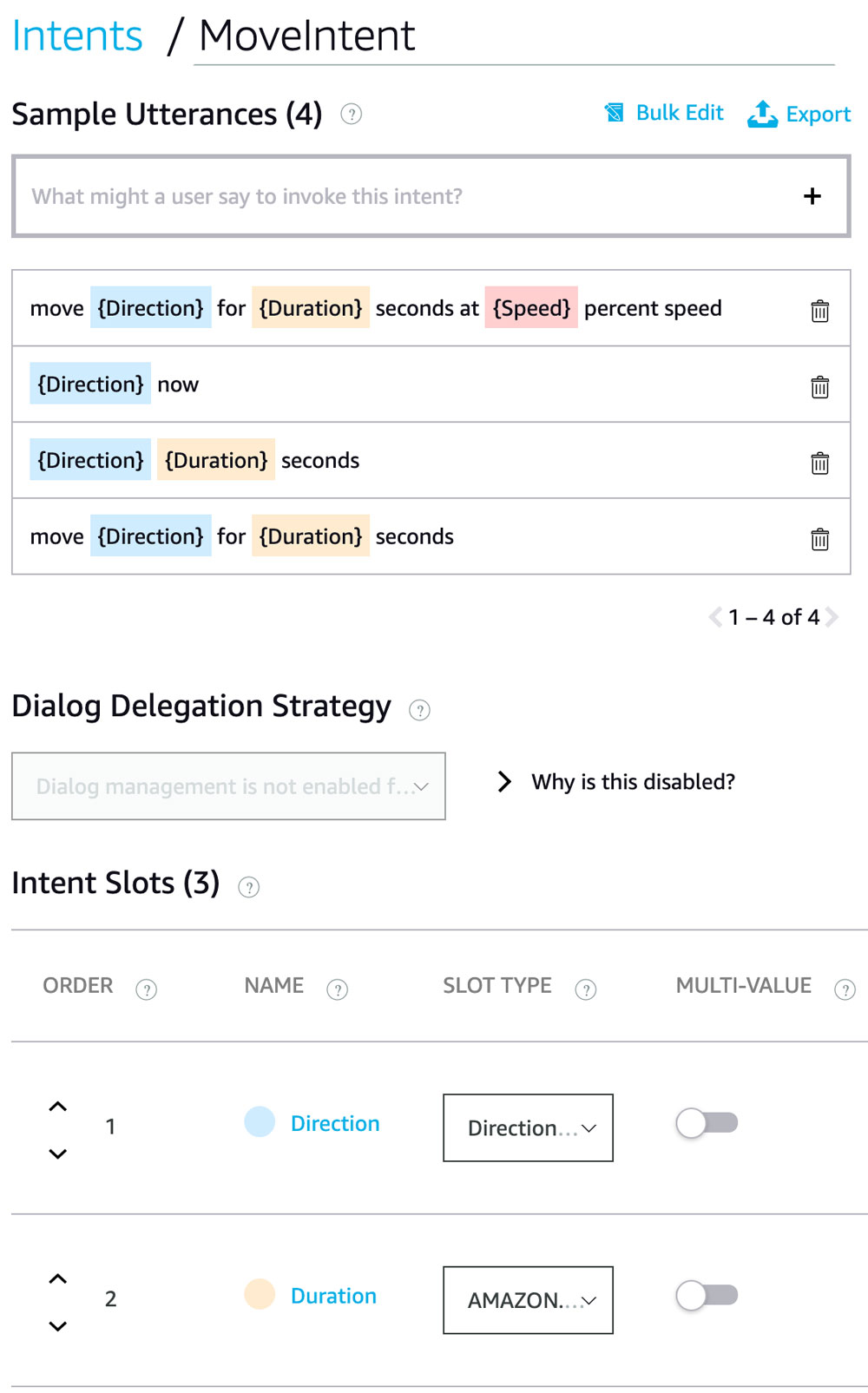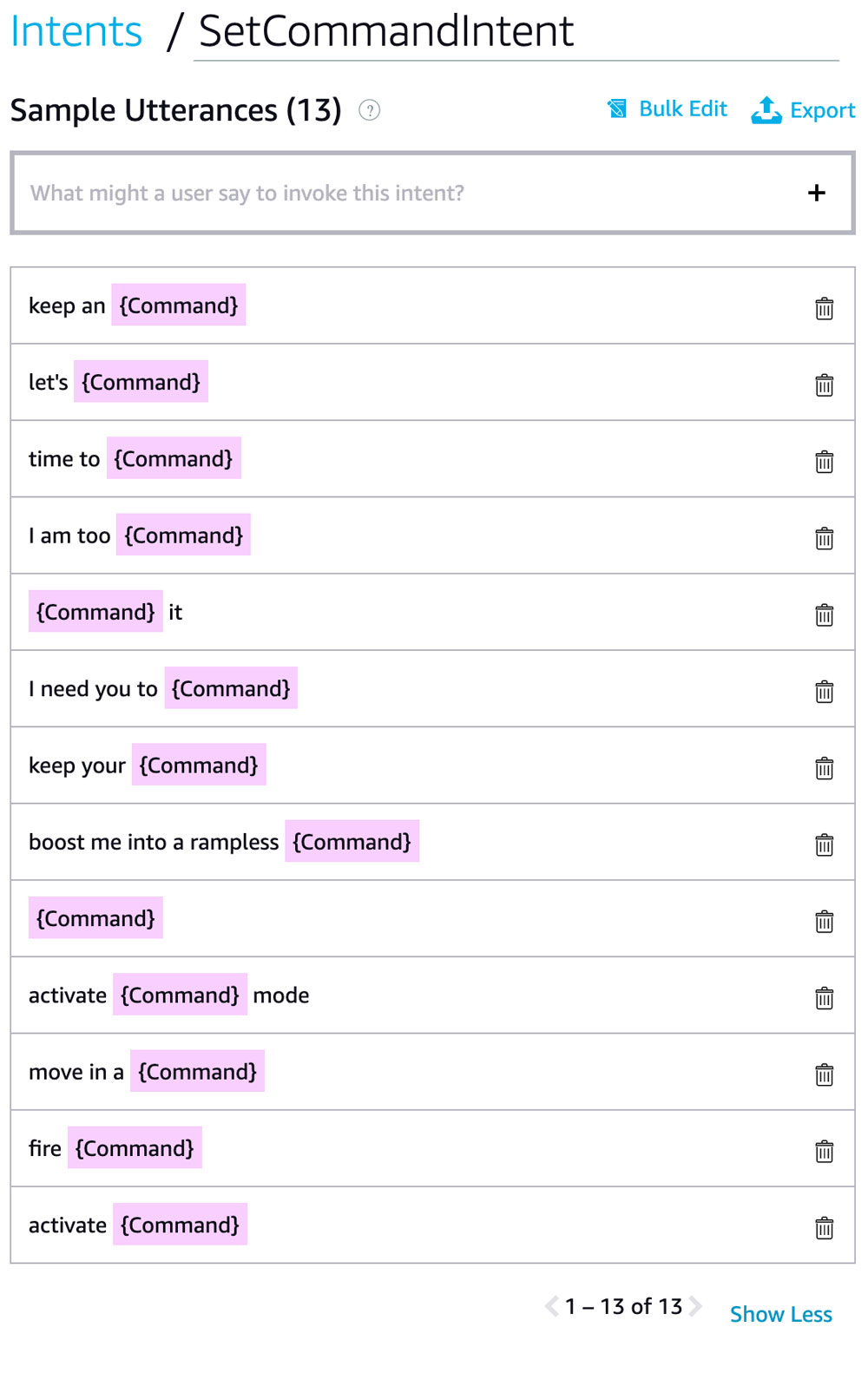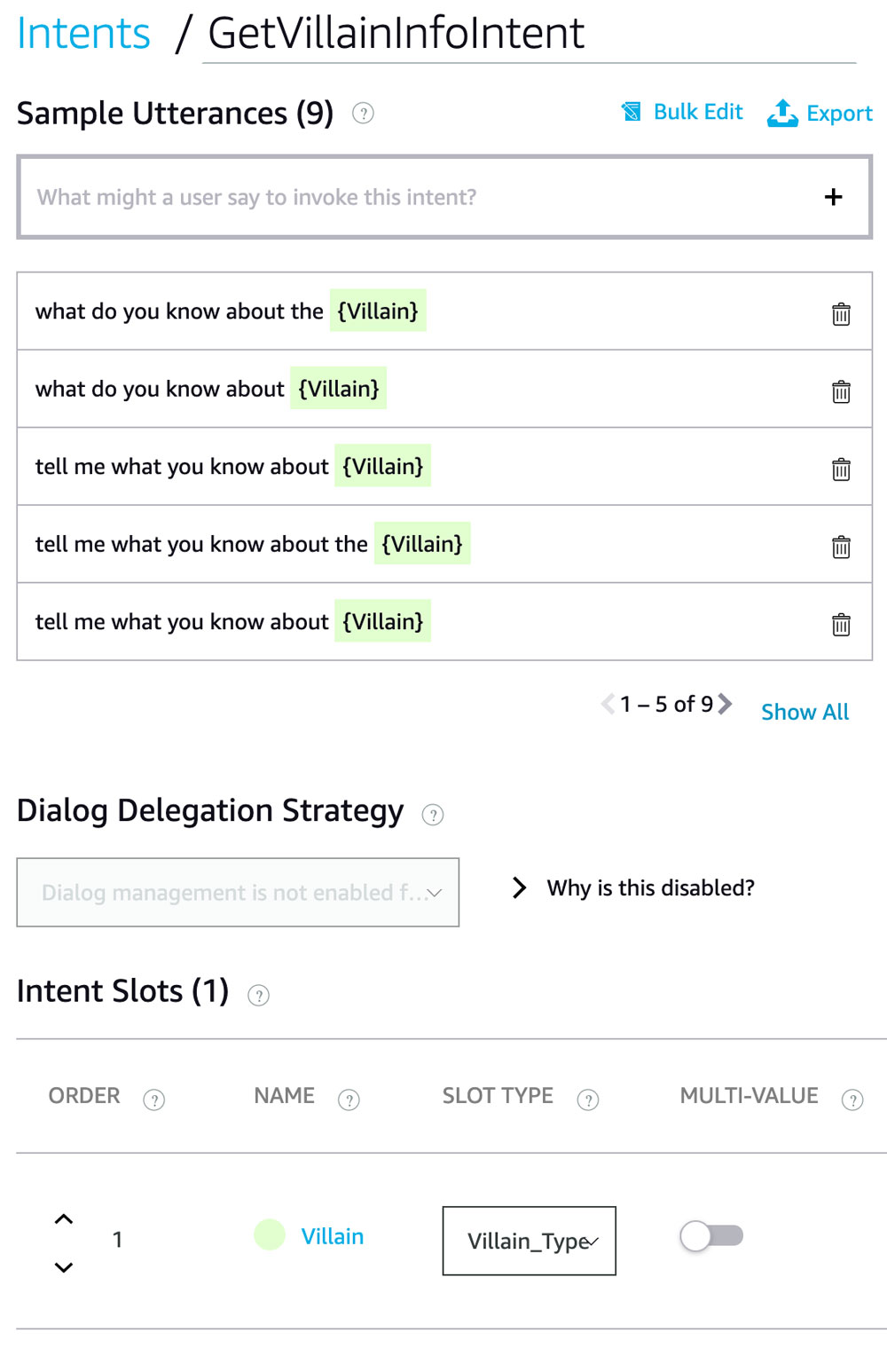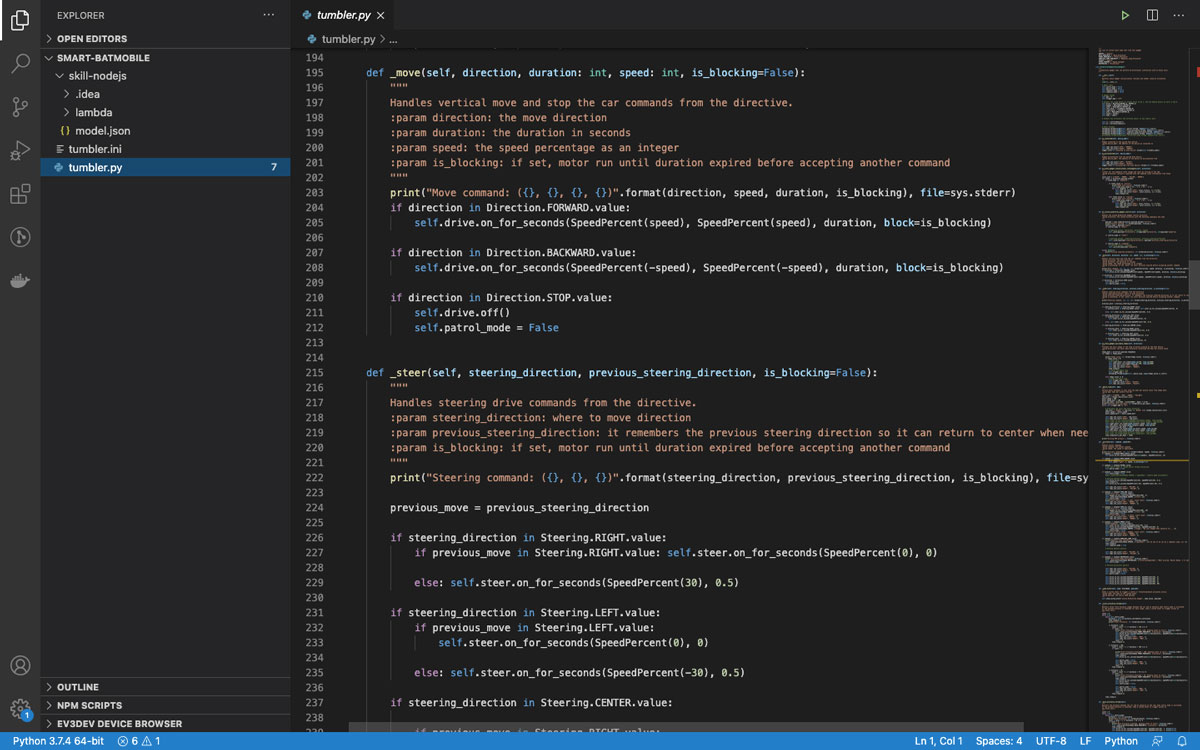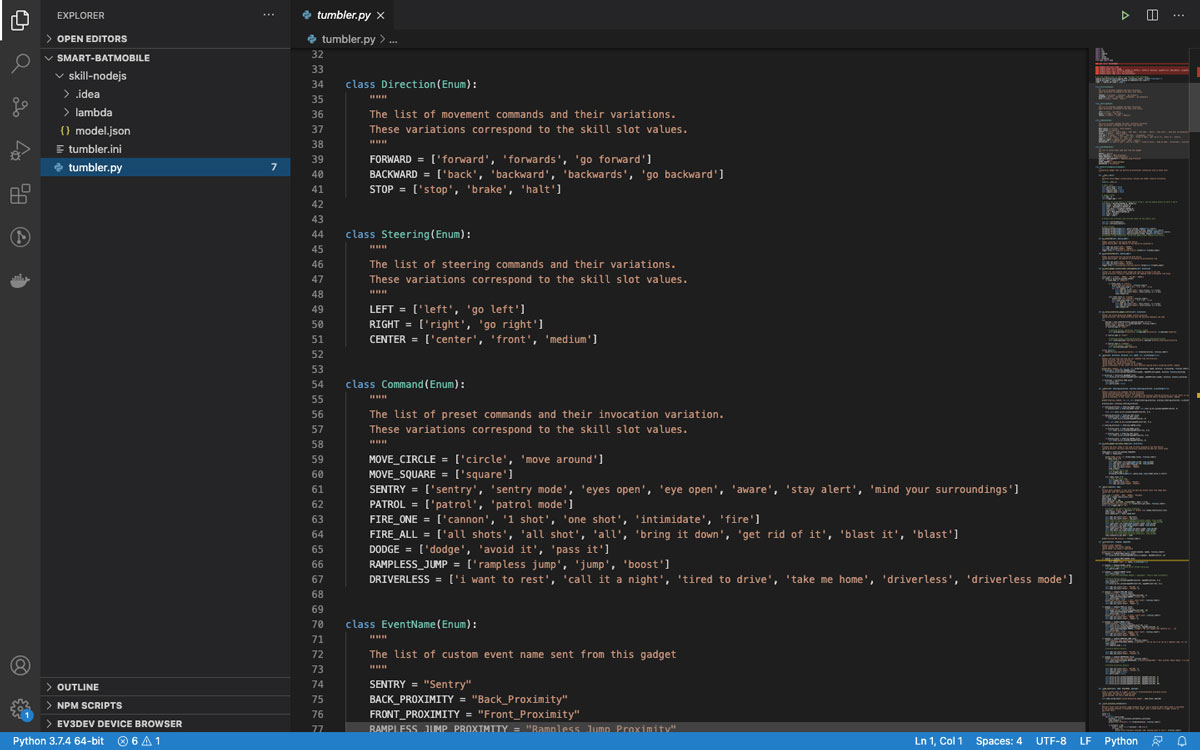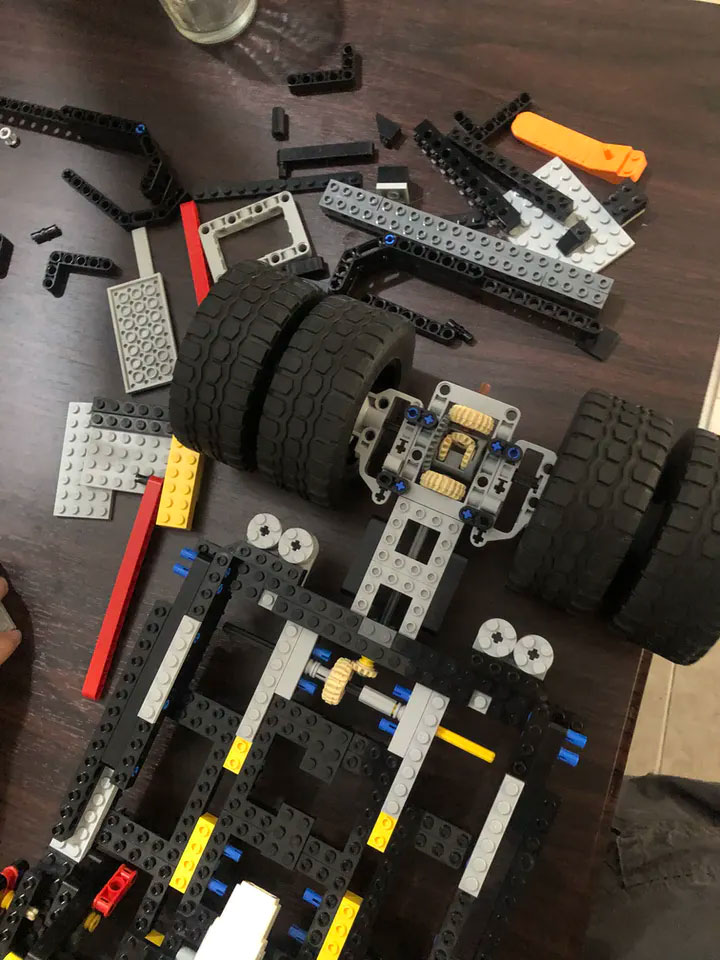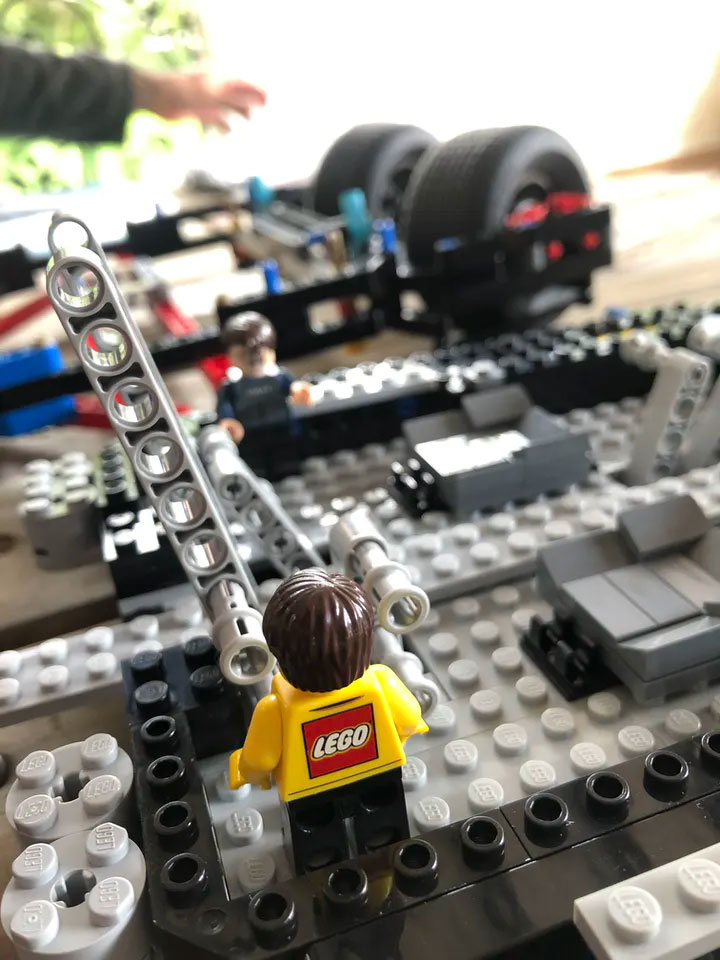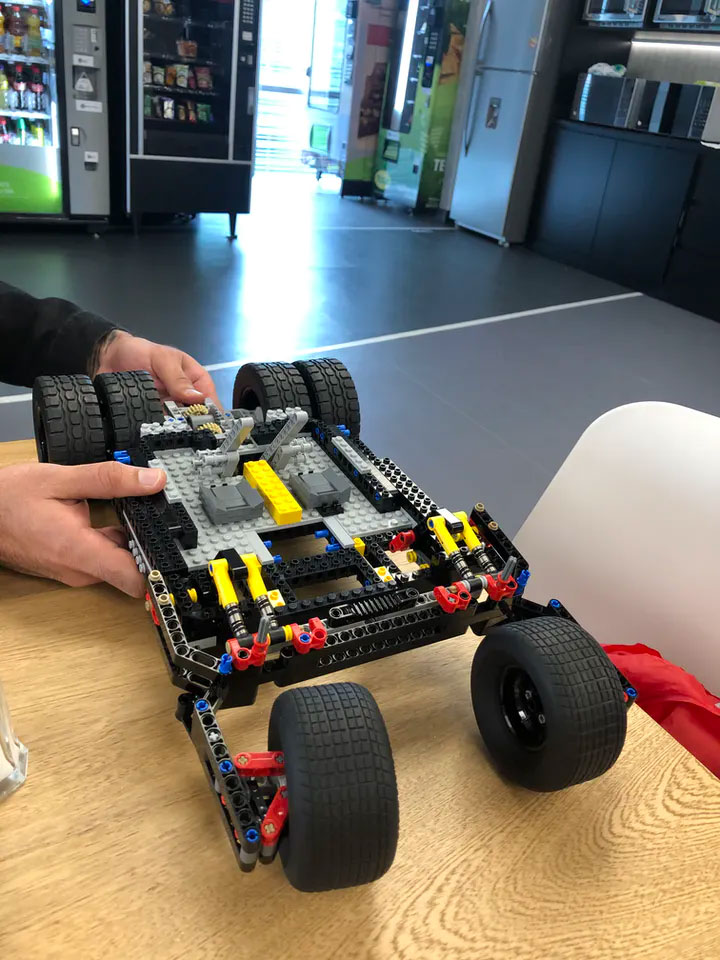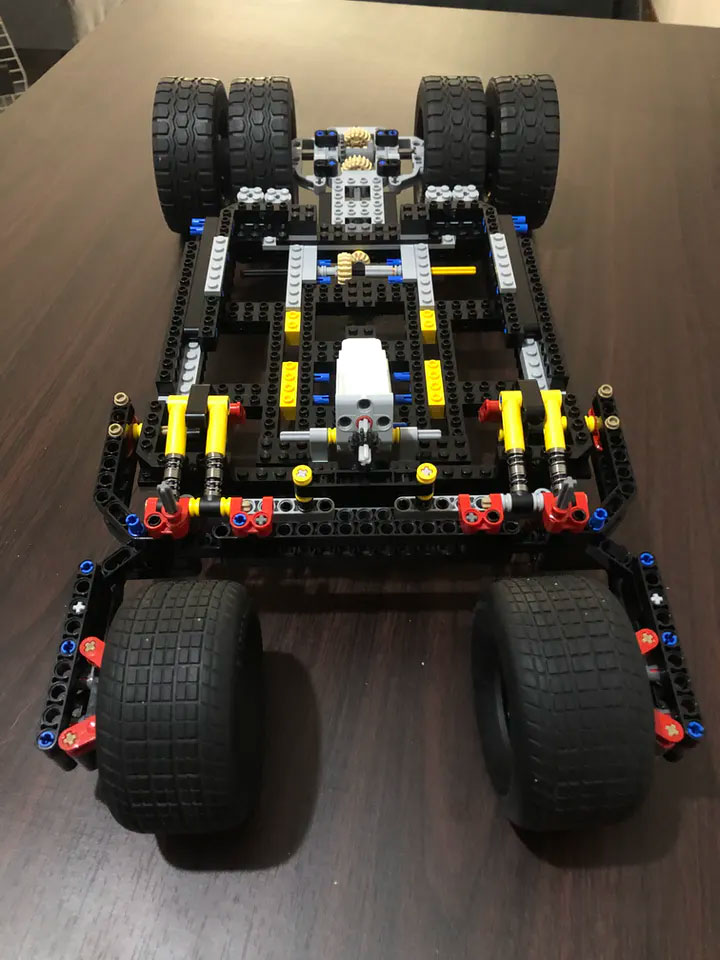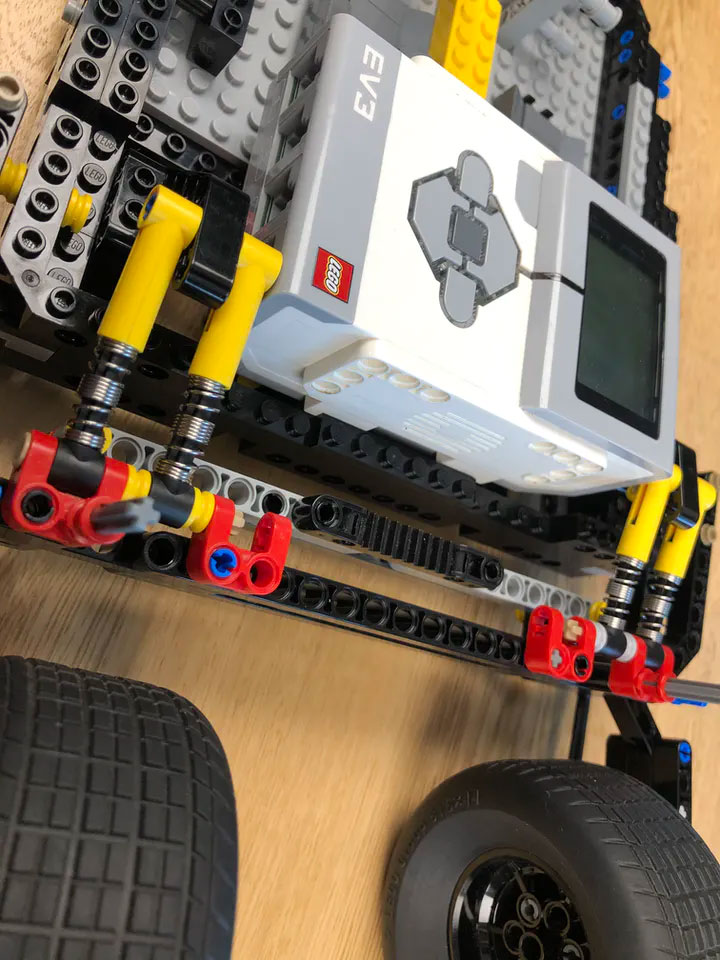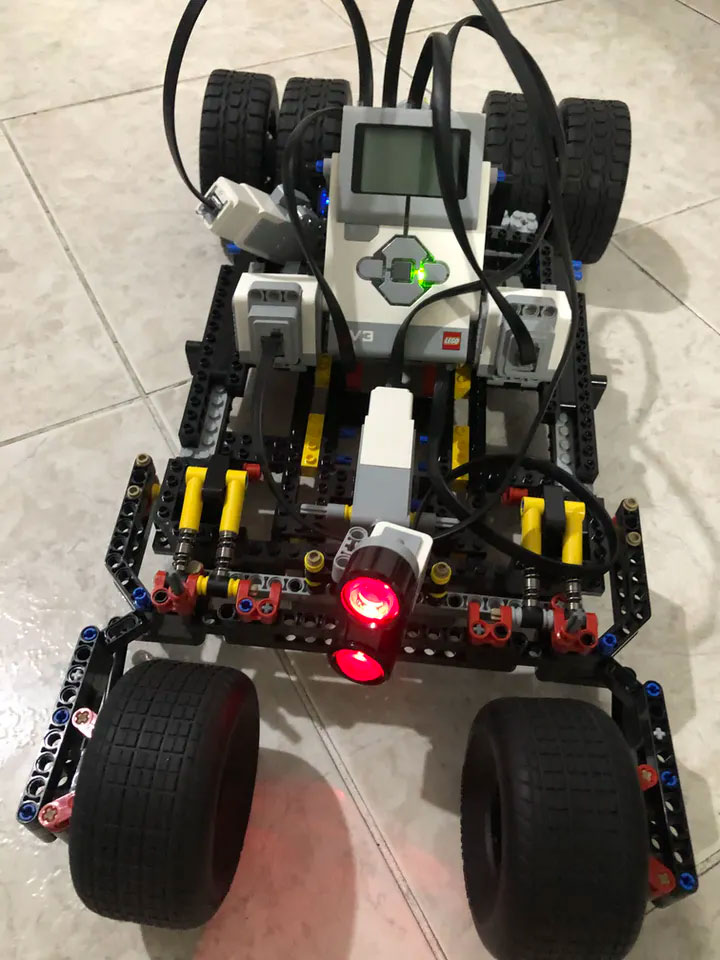We wanted to create a voice-commanded smart Batmobile and bring the current Tumbler design to whole new level of awesomeness, using LEGO MINDSTORMS and Amazon Echo powered by Alexa. The purpose of designing a Batmobile was to enter a Global Challenge sponsored by Amazon and LEGO.
Client
Year
2019
Deliverables
- LEGO Assembled Tumbler
- Voice User Interface
- Smart Vehicle to fight crime
- The process behind the creation
- Code
The Challenge
Building a smart batmobile that can have a mind of its own and assist Batman when fighting crime.
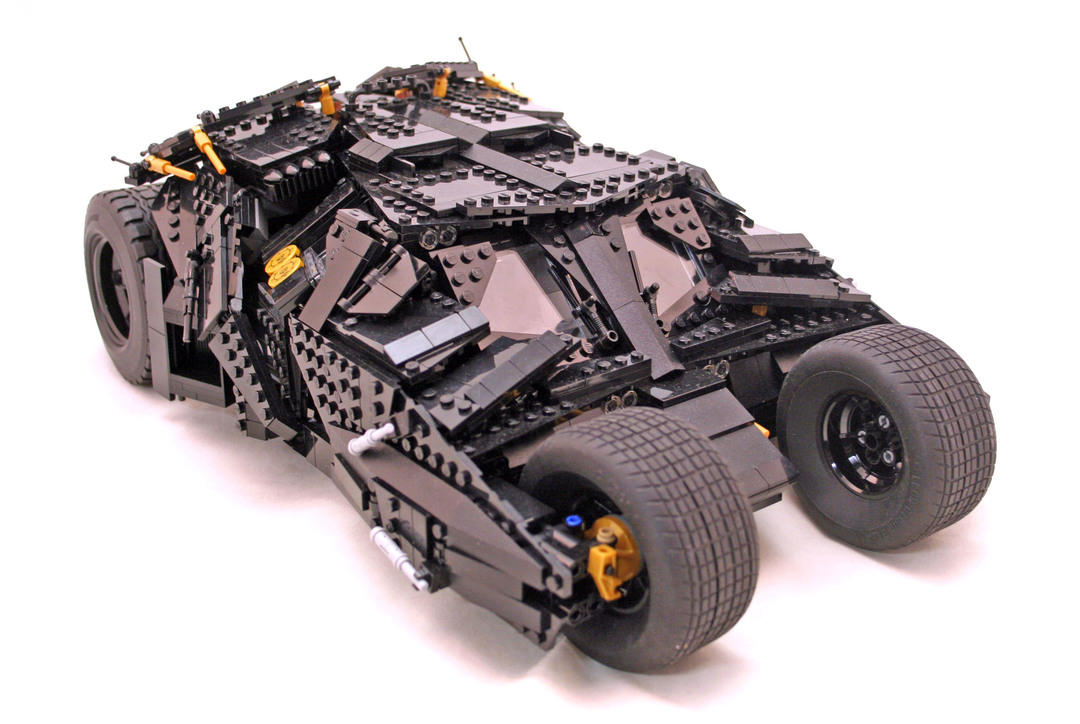
My Role
As the Design Lead of this side project my main responsibility not only included designing a voice user interface for the Batmobile but also making sure that we could bring a unique yet reliable personality into the car.
Main Tasks
- Research
- User Insights and Ideation
- Feature Prioritization
- Interaction Model
- Voice User Interface and Experience Design
- Design Execution and Validation
- Development and Code
The Design Process
- Empathy Map
- Problem Definition
- Ideation
- Conversational Design
- Voice User Interface Design
- Coding
Design and Research Toolkit
The tools, technology and artifacts chosen for the task at hand.
Scripting
Empathy Map
Alexa Developer Console
LEGO Mindstorms Kit
Python
VS Code
Empathizing with the Caped Crusader
By taking a human centered approach, we can get insight into Batman’s pain points and obstacles when driving The Tumbler, fighting crime and dealing with daily life errands.
Enter the Empathy Map, a valuable artifact that will help us understand the context of Batman driving its Batmobile, by answering 4 simple questions:

Mapping our observations
We wrote what we observed from the movies, animated series and comics on post-its. Then we placed them on a wall to map out and gain an overall understanding of what Batman said, did, thought and felt.
Insights clustering
It’s time to cluster all the information to identify the main top findings. Let’s look for common needs or patterns.
TOP FINDING 1
When Batman is in trouble, he calls Alfred: Alfred is the voice of reason for Bruce.
He gives Alfred a call whenever he needs help or when he is in trouble.
“What would you have me do, Alfred?”
“We need to find out what Bane is up to …”
Sometimes he can’t make the right decision… Alfred!
TOP FINDING 2
Batman is stubborn and overly confident when driving and fighting crime.
He crashes cars and breaks the law.
He uses the Tumbler to remove obstacles and brings down walls.
“How can I get there faster?”
“I know this TOO well…”
“I’ll fight harder, I always have …”
“Batman has no limits …”
“Boost me into a rampless jump.”
TOP FINDING 3
Batman doesn’t get to talk much while driving the Tumbler: Once on the wheel, loneliness starts kicking in.
“I would like to talk to someone, but my identity …”
He feels clueless about certain situations.
He feels lonely when fighting crime.
When he hears back from the Tumbler’s AI, he doesn’t react at all …
He can’t talk to anyone while driving.
Constructing a Point of View based on Batman’s needs
We write down the Top Findings and provide a rationale behind the finding. We also add one or two memorable quotes from Batman to support each finding.
TOP FINDING 1
When Batman is in trouble, he calls Alfred: Alfred is the voice of reason for Bruce.

TOP FINDING 2
Batman is stubborn and overly confident when driving and fighting crime.

TOP FINDING 3
Batman doesn’t get to talk much while driving the Tumbler: Once on the wheel, loneliness starts kicking in.

Creating opportunities for design
We are now rephrasing each top insight as a few How Might We questions to build the foundation for the ideation phase.
When Batman is in trouble, he calls Alfred: Alfred is the voice of reason for Bruce.
How might we make Alfred’s wisdom present and available at times when Batman is driving the Tumbler?
How might we allow Alfred to keep assisting Batman when he is not by his side?
How might we make Batman feel less guilty when calling Alfred for help?
Batman is stubborn and overly confident when driving and fighting crime.
How might we keep Batman in check with his emotions while he drives?
How might we help Batman understand the consequences of his actions while driving?
How might we decrease the number of crashes Batman incurs?
How might we help Batman become a more conscious and aware driver?
Batman doesn't get to talk much while driving the Tumbler: Once on the wheel, loneliness starts kicking in.
How might we make Batman feel less lonely?
How might we turn the tumbler his safe space?
How might we bring companionship or a partner in crime to Batman?
Unveiling Design Principles
We grouped our HMW questions into 3 identified patterns or themes. These themes shed light onto the definition of our Design Principles that will provide a baseline for our product design process.
3 Design Principles are revealed:
DESIGN PRINCIPLE 1: MAKE ALFRED OMNIPRESENT
How might we make Alfred’s wisdom present and available at times when Batman is driving the Tumbler?
How might we allow Alfred to keep assisting Batman when he is not by his side?
How Might We Keep Batman In Check With His Emotions While He Drives?
How might we help Batman understand the consequences of his actions while driving?
DESIGN PRINCIPLE 2: ENABLE SMARTER AND SAFER DECISIONS ON THE WHEEL
How might we turn the tumbler his safe space?
How might we help Batman become a more conscious and aware driver?
How might we decrease the number of crashes Batman incurs?
DESIGN PRINCIPLE 3: BRING COMPANY AND JOY TO THE LIFE OF THE CAPED CRUSADER
How might we make Batman feel less lonely?
How might we bring companionship or a partner in crime to Batman?
Generating ideas for each How might we question defined
We brainstormed fresh ideas to turn identified problems into design solutions. We then marked the top most remarkable ideas with a filled heart.
MAKE ALFRED OMNIPRESENT
What if we had an intelligent assistant built into the tumbler that talks like Alfred?
What if we brought Alfred’s personality and wit into the Tumbler?
What if the car had recorded Alfred’s advices for Batman to listen to in the car?
What if the personal assistant were to be a woman?
What if the personal assistant talked with british accent and sounded like an old man?
ENABLE SMARTER AND SAFER DECISIONS ON THE WHEEL
What if the tumbler had bat powers to be aware and mindful of its surroundings?
What if the tumbler were driverless, so Batman could take a nap?
What if we had a voice assistant that controls the car in a Fail safe mode?
What if the Tumbler were the reincarnation of a Batman’s old flame?
What if the Tumbler had a mind of its own to override Batman’s irresponsible actions when driving?
BRING COMPANY AND JOY TO THE LIFE OF THE CAPED CRUSADER
What if the car could dance along with Batman to the rhythm of music being played?
What if the tumbler could tell random jokes related to Batman’s universe?
What if Batman could play trivia games to learn about his enemies while driving?
What if the personal assistant were flirtatious with Batman?
What if the tumbler could provide words of encouragement and advice?
The Concept
Bringing Alfred’s persona into a Voice Assistant
As Alfred gets older, Batman will require an equally smart and wise companion to help him through his hardest days. We believe Echo can become not only his personal advisor, but also a great sidekick he can rely on.


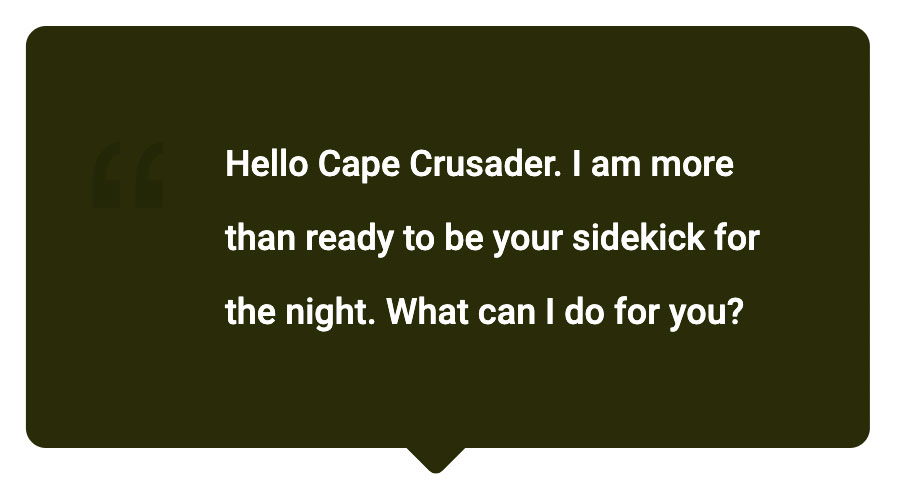

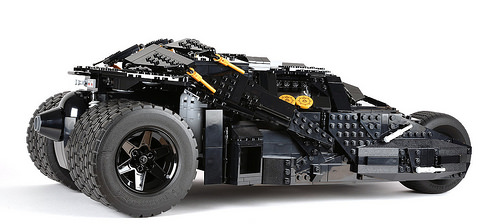
Echo’s mission statement
First, here’s a mission statement on what The Echo assistant skill should accomplish. This statement defines some of the features and implementation of the skill and can help you determine whether it hits each conversational maxim to build, navigate and maintain context throughout the entire conversation.
”I was built to help Master Bruce fight crime, avoid road accidents, and bring joy to his daily life errands. I am constantly checking the road and its surroundings, staying alert at all times to avoid collisions and take that pressure off the Bat. When Master Wayne is feeling tired and sleepy, I take control over the Tumbler and drive all the way back to Wayne Manor. When Master Wayne invokes my name and asks me to speed up and boost into rampless jumps, I analyze the environment and road conditions and let him know if it is safe to make such moves or not, then I make the right call. I also provide entertaining options such as random joke telling, and dancing. When Master Wayne is feeling down, I provide words of encouragement and a sense of humor that resemblances that of Alfred's.
EchoBatman's sidekick and pourer of comfort cereal
Designing the Conversational Experience
Designing for conversations will enable Batman to easily interact with his own car by simply using plain language without having to resort to technical jargon or commands.
Batman’s most common situations behind the wheels
We are mapping and scripting Batman’s most prominent actions, quotable quotes and situations from the animated series and movies.

Situational Design
The scripting process is the starting point to design for a natural conversation or interaction between Batman and its personal assistant, and that’s exactly what we are aiming for.
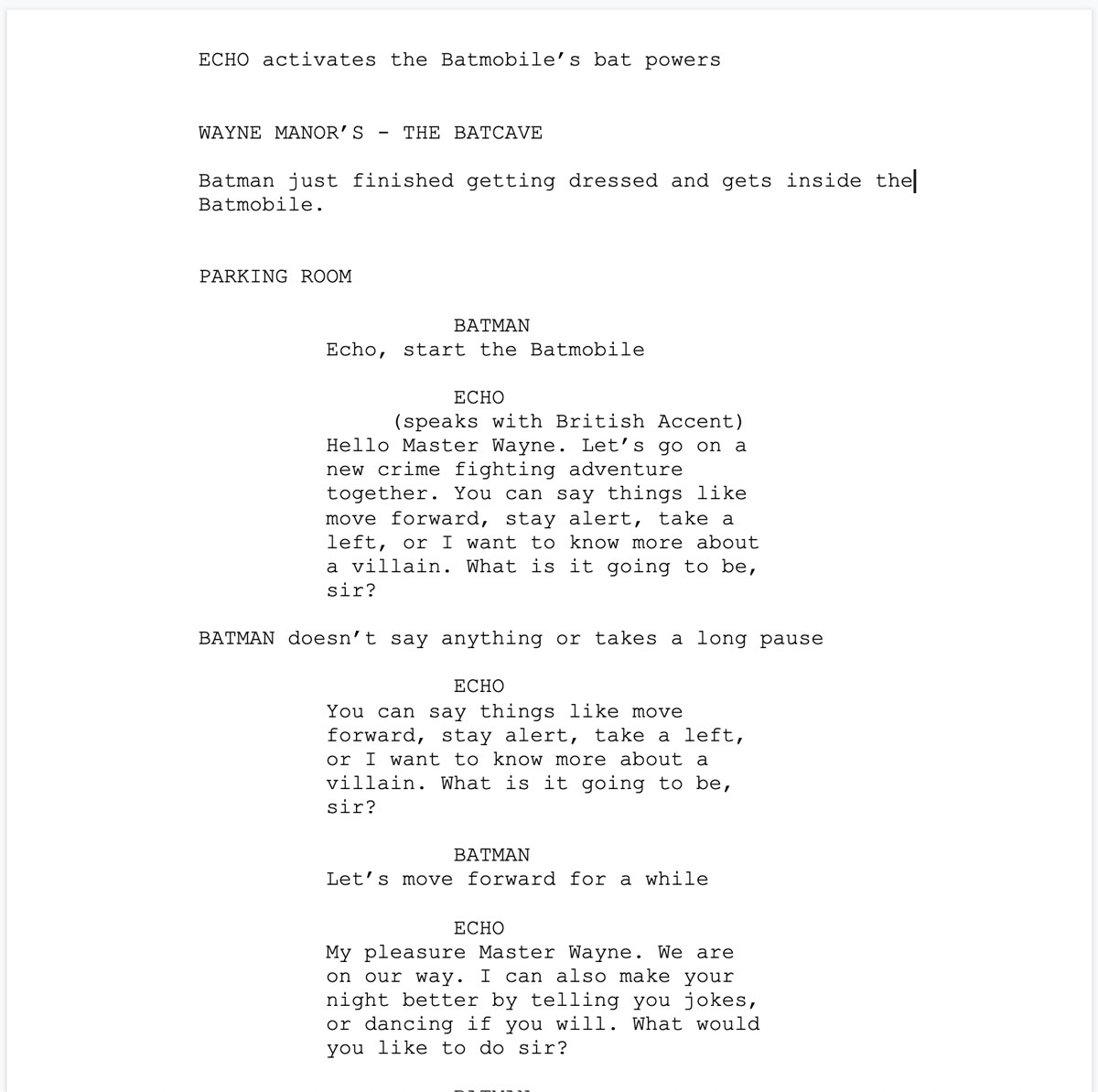
Once we have finished designing the script we start highlighting words that can potentially serve as actions that the assistant needs to execute upon. Then we write down the synonyms next to those actions.
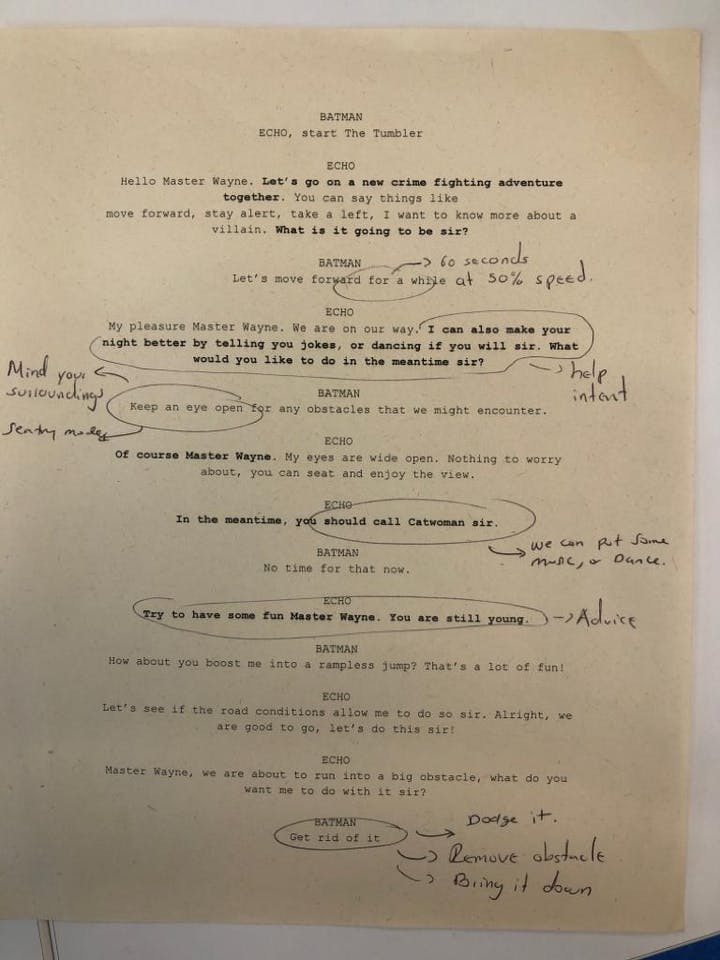
Interaction Model
I defined a custom interaction model. The interaction model is the first step to define the voice interface through which Batman would interact with Echo. To define the voice interface, I used Batman’s previously identified actions and mapped them as inputs to intents.
Intents
The intents represent actions that fulfills a Batman’s spoken request. Intents are specified in a JSON structure known as the intent schema.
Sample Utterances
Utterances are a set of most common spoken phrases mapped to the intents. Every intent should include as many phrases as possible. Given the flexibility and variation of spoken language in the real world, there will often be many different ways to express the same request, and the assistant needs to understand those requests.
Alexa Skill Code
We then create the Alexa Skill, which is code that can handle requests send to Echo when Batman is talking to him. The code we write needs to:
- Recognize each incoming request that Echo sends
- Return an appropriate response to the user
- Send the request to the LEGO Brick responsible to operate the car
Handling the events that make the batmobile move and perform
When Batman issues a request to Echo, a series of events are triggered. These events are handled by the Alexa Skill and notifies the LEGO EV3 device (the brains behind the batmobile) to perform an action or command. These action could be something like:
- Move the car forward for 30 seconds at 50% speed
- Go faster
- Shoot an obstacle
Batmobile Design
We designed and built a sturdy LEGO chassis for the Batmobile.
Tumbler Chassis Design
We used Mecabricks to build a digital model of a functional Batmobile before putting together the LEGO technic pieces and bricks together. This gave us a realistic overview of what could be done using the LEGO pieces we had at our disposal.
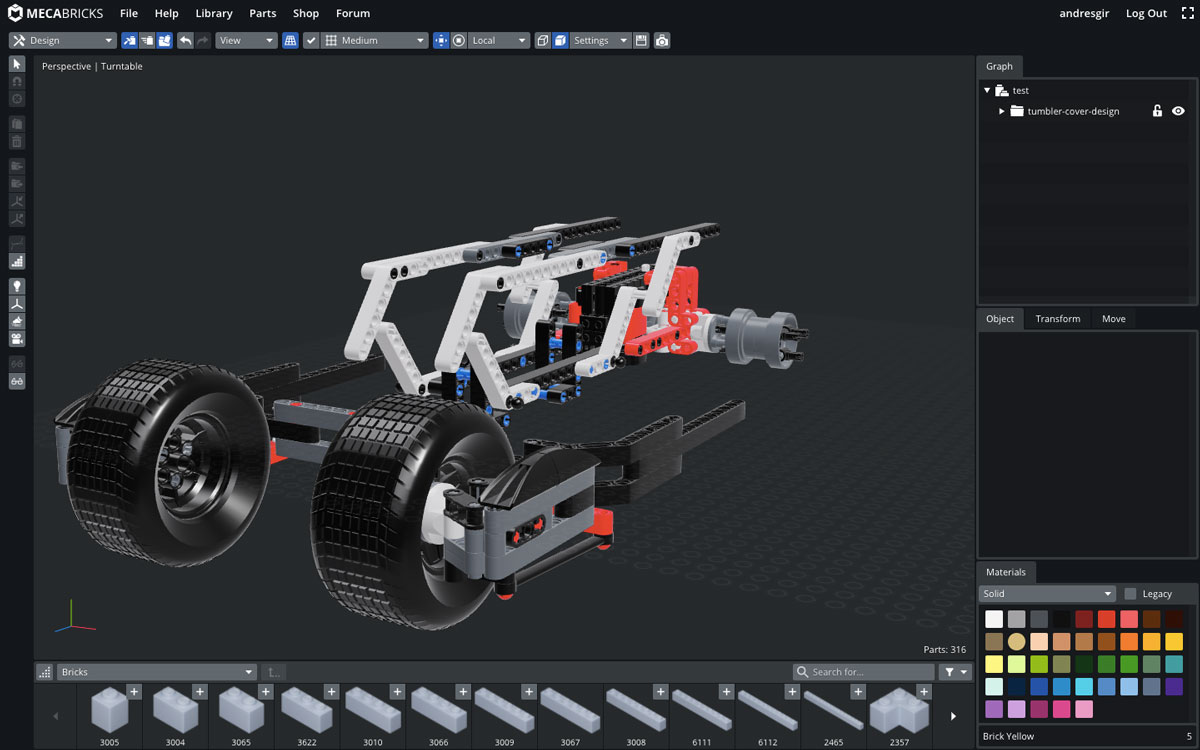
A real life glimpse
Do you want to see the Batmobile in action?
The impact
The project caught the attention of too many members of the Hackster.io community. Details of the project published on Hackster can be found here.
